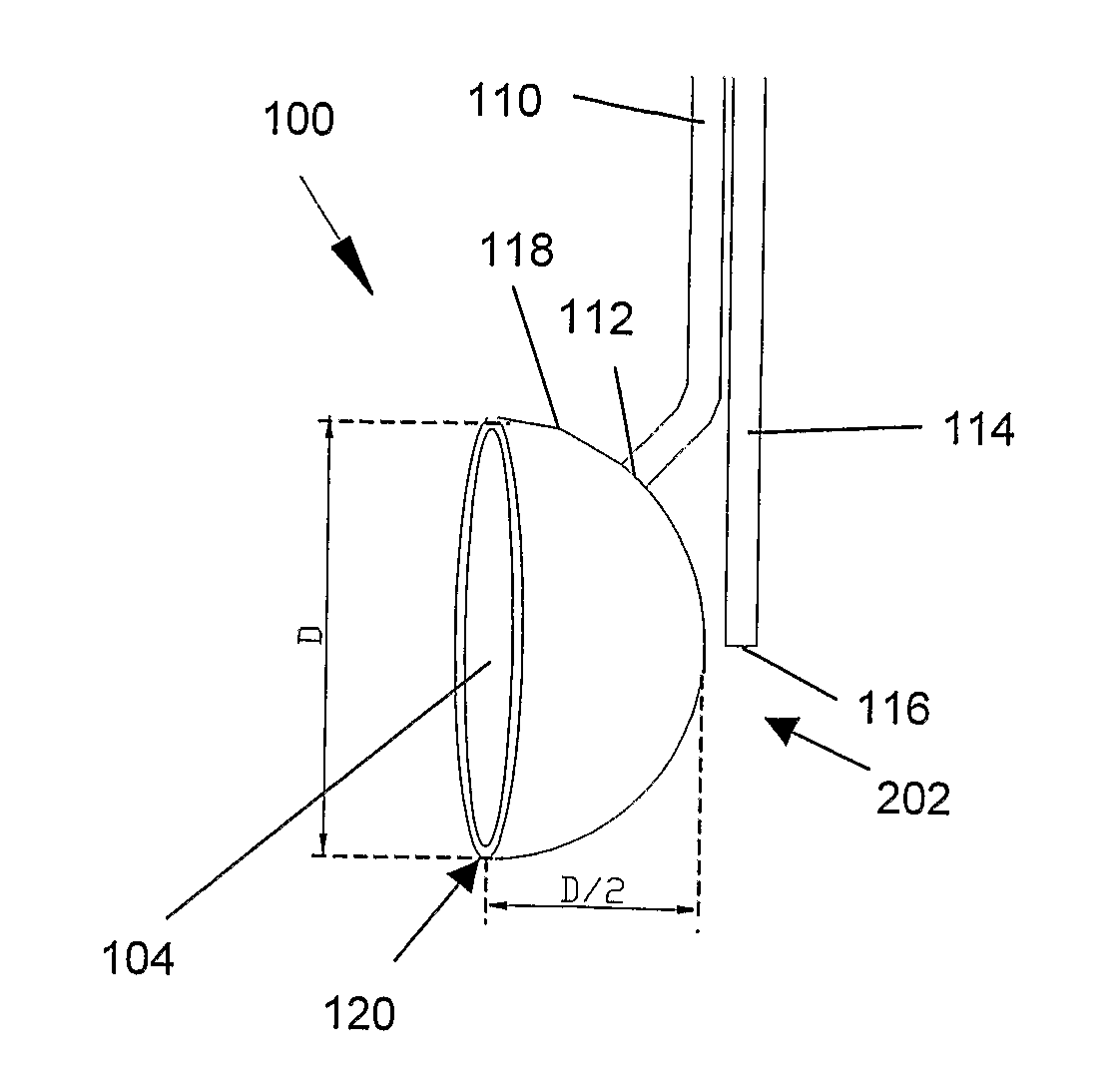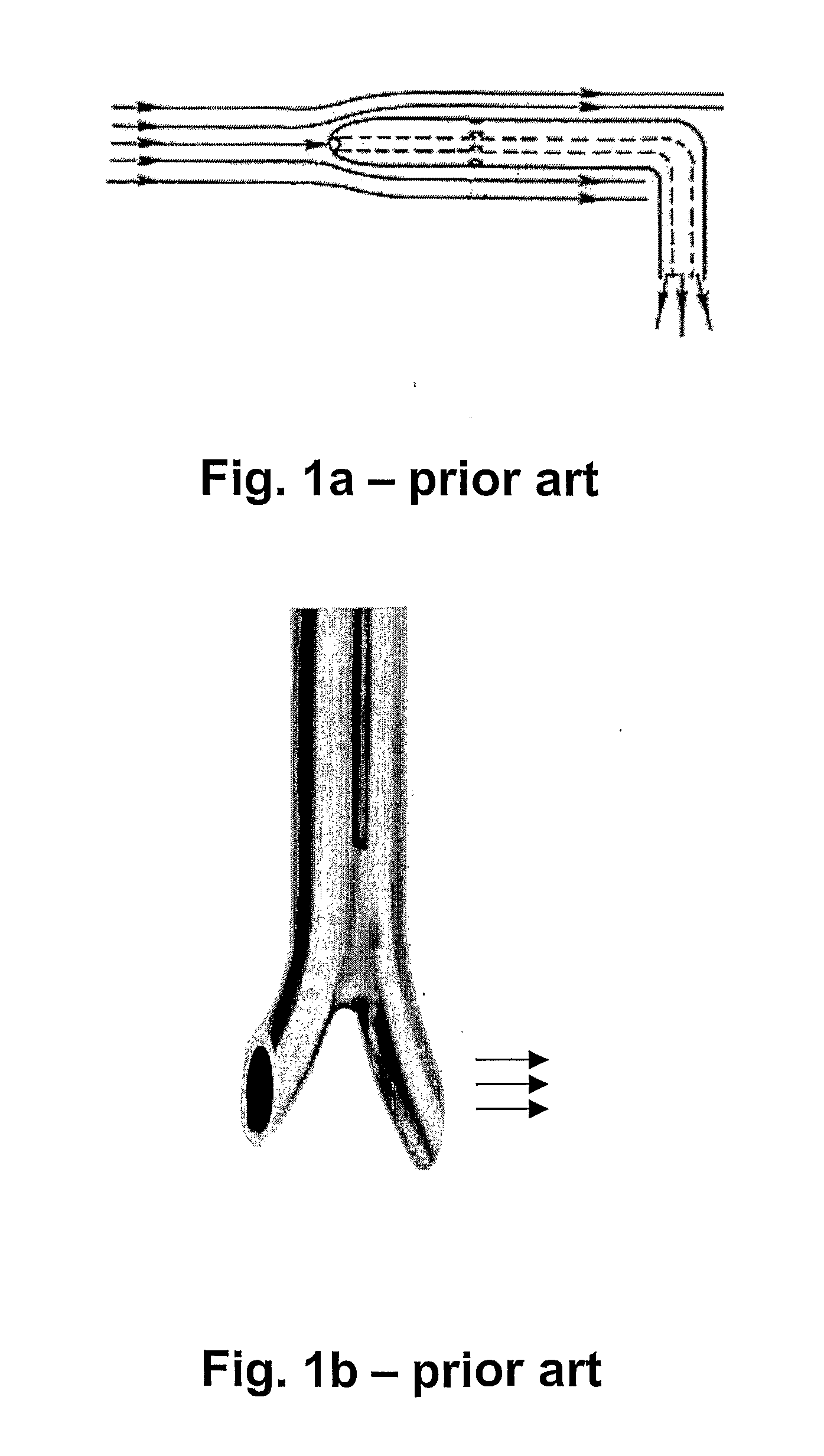Method and Device for Measuring
- Summary
- Abstract
- Description
- Claims
- Application Information
AI Technical Summary
Benefits of technology
Problems solved by technology
Method used
Image
Examples
first embodiment
[0067] In a first embodiment, the invention relates to a pressure probe allowing to combine correct pressure measurement with flow angle independency, Reynolds independency and, if two measurements are carried out, with a high differential pressure gain. Several examples of such pressure probes are shown in FIG. 4 to FIG. 8.
[0068] The pressure probe 100 comprises a bulbous part 102 wherein at the front side, facing the flow, either a planar surface or a recess 104 is provided. The recess 104 may be concave. If a recess 104 is present, it has a front opening 106 and a back portion also referred to as inner surface 108. In the embodiment illustrated, the device furthermore comprises two pressure sensing lines, a first one being a high pressure sensing line 110, which has a sensing port 112 in the recess 104 and a second pressure sensing line, being a low pressure sensing line 114 at the back or the side portion of the bulbous part 102, having a sensing port 116 in a region of lower pr...
second embodiment
[0075] In a second embodiment, the present invention relates to a pressure probe having a front side, adapted to face upstream, and a spherical shaped bulbous part 202. Examples of these probes are shown in FIG. 9, FIG. 10 and FIG. 11. The spherical shaped bulbous part 202 has an outer surface 118 that either can be a sphere or part thereof. Typically the outer surface 118 can be half a sphere, the device then being referred to as a hemisphere, can be a partial sphere being larger than half a sphere, the device then being referred to as a positively extended hemisphere, or can be a partial sphere being less than half a sphere, the device then being referred to as a negatively, cut hemisphere The extended hemisphere and the cut hemisphere thus can be seen as a hemispherical shape whereby at the front side respectively a part is added or a part is cut off. The latter is illustrated in FIG. 11, hereby a part with width x is removed from the hemisphere to obtain a cut hemisphere. The an...
PUM
 Login to View More
Login to View More Abstract
Description
Claims
Application Information
 Login to View More
Login to View More - R&D
- Intellectual Property
- Life Sciences
- Materials
- Tech Scout
- Unparalleled Data Quality
- Higher Quality Content
- 60% Fewer Hallucinations
Browse by: Latest US Patents, China's latest patents, Technical Efficacy Thesaurus, Application Domain, Technology Topic, Popular Technical Reports.
© 2025 PatSnap. All rights reserved.Legal|Privacy policy|Modern Slavery Act Transparency Statement|Sitemap|About US| Contact US: help@patsnap.com



